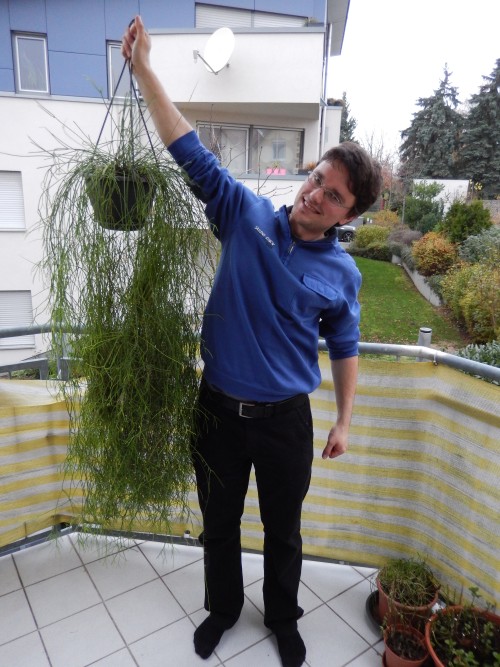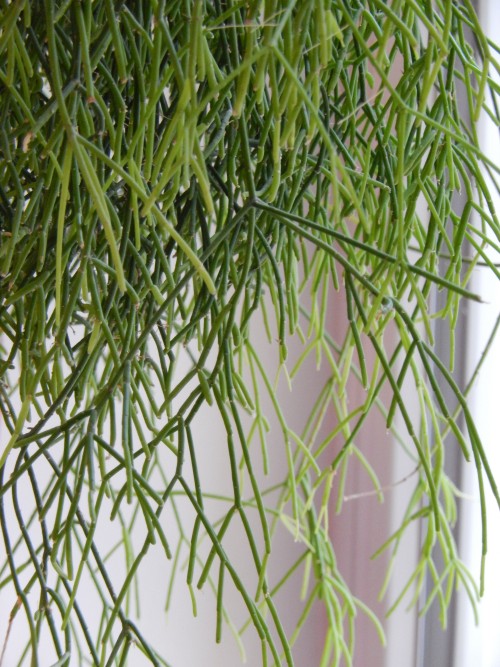Plants are incredibly adaptable and versatile. There are about 300,000 to 315,000 plant species around the world that inhabit almost all climate zones! Only a very small fraction of these are suitable as house plants. A good house plants needs to be adapted to a house-like climate, beautiful, easy to propagate and not too large. But for a perfect match (Figure 1) and a happy plant, not even that is enough.

Figure 1: Rhipsalis, grown from a cutting that I borrowed from a friend.
A plant that suits you
People have different ways of caring for plants. Some are neglectful and leave the plants alone for most of the time. This works exceptionally well for drought-adapted plants like Hippeastrum and succulent plants – cacti, Aloë, Kalanchoë, Crassula, Echeveria, and many others. Plants that need constant moisture, like African violets or Cyclamen, will dry out after a short time. Other caretakers are overly attached and look after their plants every day. They will kill many plants with too much water or fertilizer, but plants like Cyperus will thrive! But how do you find suitable plants without knowing your style and browsing plant care literature?
The thief's approach
Just "borrow" cuttings from friends and family!
First, the plant already survived in other people's home and is thus a proven house plant. A random plant from a flower shop is perhaps pretty and easy to grow commercially, but not necessarily happy inside your house. Plants that are sold in large quantities but certainly aren't beginner's plants include Azalea or Cyclamen.
Second, if a small cutting fails, there's not much lost. If you actually stole the cutting, nobody even knows that you had it, so you can just toss the dead plant without regret. If you however got a big, spectacular plant as a gift, you might have a big, spectacular failure by your window soon! And what do you tell the people who gave you the plant? That's bad luck, just as my grandma said!
Third, if the cutting survives, it is obviously suitable for you and for the place you chose. The plant has passed it's most vulnerable phase and will likely continue to grow.
The Darwinist's approach
If you want big plants right from the beginning, you can buy them and throw them away if they die or you don't like them anymore. After some time, you might have some survivers. That's easier than the thief's approach, but more costly.
The botanist's approach
If you know the microclimate of a spot and your care habits, you can find suitable plants for that spot by browsing the literature. A good garden center will have plants for many spots inside a house for sale, but you'll have to process a lot of information until you have a good match. Identifying plants is a prerequisite. This approach is the only way to give plants as gifts: You must find a plant that matches the caregiver and the place!
In conclusion, my grandma was right: plants given as gifts will hardly flourish. Stolen cuttings give the best results!


Comments
Comments are closed.